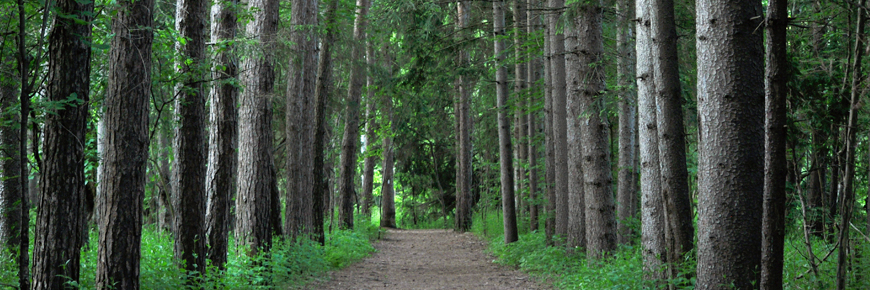
Forest habitat
Rouge National Urban Park
Forests make up a significant portion of Rouge National Urban Park and are home to many species of plants and animals.
Historically, much of the Rouge Valley was covered in dense old-growth forests. Although some trees have been cleared for development, forests still make up a significant portion of the Rouge, particularly along streams and rivers in the Toronto area of the park (south of Steeles Avenue). Many of the largest remaining tracts of forest in the Greater Toronto area are part of Rouge National Urban Park. These forest areas provide important habitat for sensitive species of birds and other animals. Restoration projects have also added to the forest cover within the park. Since 2015, Parks Canada has collaborated with park farmers, Indigenous partners, schools and conservation groups to restore dozens of hectares of forest habitat by planting over 113,000 native trees, perennials, shrubs and aquatic habitat.
Forests provide many important ecosystem services that contribute to a healthy environment. Trees produce oxygen and absorb and store carbon in their biomass, helping to combat the effects of rising atmospheric carbon dioxide levels. They also absorb air pollutants and improve local air quality. In addition, forest cover helps to control the runoff of precipitation and prevent soil erosion, while the shading and shelter provided by trees help to regulate local temperatures. Visit the park on a hot summer day and walk through the mature forests on the Cedar, Vista or Mast trails to experience how forests can really cool you down.
In addition to these ecosystem services, the forests of the Rouge are home to a diverse array of trees, understory plants, and animals. Some forests in the park are part of the rare Carolinian life zone which, in Canada, only exists in Southern Ontario.
These forests include Carolinian tree species such as:
- Shagbark hickory
- Bitternut hickory
- Ironwood
- Black maple
- Blue beech
- White oak
Beneath the tree canopy, the forest floor is filled with many plants including ferns and native wildflowers. These forests are also home to mammals such as:
- Squirrels
- Chipmunks
- White-tailed deer
Birds such as:
- Blue jays
- Ovenbirds
- Woodpeckers
- Chickadees.
These animals rely on forests for food and shelter.
Related links
- Date modified :